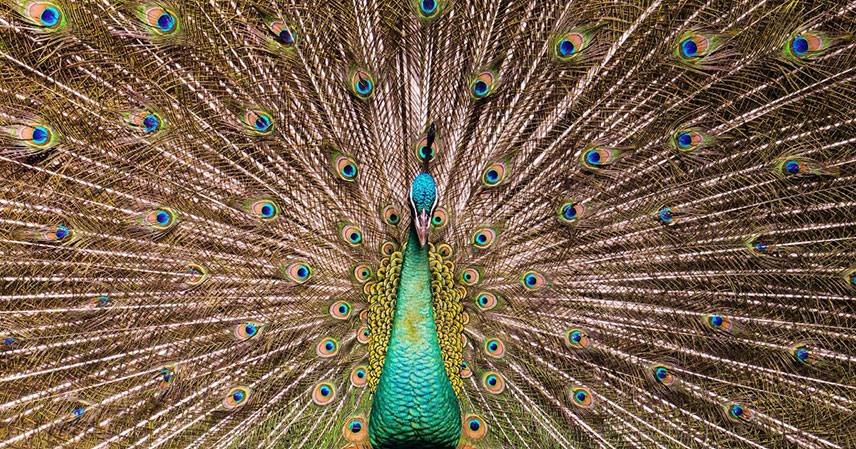For centuries, the dazzling iridescence of peacock feathers has captivated humans. We’ve admired their beauty, used them in adornment, and even incorporated their imagery into art and literature. But recent scientific discoveries reveal a far more astonishing truth: these vibrant plumes aren’t just beautiful; they also possess the remarkable ability to emit laser light!
A groundbreaking study published in Scientific Reports has unveiled this fascinating phenomenon, revealing a previously unknown bio-laser cavity within the animal kingdom. This discovery opens up a world of possibilities for understanding natural photonic structures and potentially inspiring new bio-inspired technologies.
The Mystery of Iridescent Colors 🌈
The brilliant, shimmering colors of peacock feathers, and similar structures in butterflies and other creatures, aren’t due to pigments like those found in paints or flowers. Instead, these vibrant hues arise from a complex interplay of light and nanostructures. Think of it like a microscopic prism, but far more sophisticated.
In the case of butterfly wings, tiny scales made of chitin (a common polysaccharide in insects) are arranged in a precise, overlapping pattern, much like roof tiles. This structure acts as a diffraction grating, scattering light to produce a range of colors.
Peacock Feather Nanostructures: A Natural Laser 🦚
Peacock feathers take this natural light manipulation to a whole new level. Their barbules—tiny, fiber-like components—are composed of ordered melanin rods coated with keratin. These structures are arranged in a highly regular, periodic pattern at the nanoscale.
The spacing of these barbules determines the specific wavelengths of light that are reflected, creating the characteristic iridescent colors we see. But the study found something even more remarkable: when these feathers are dyed multiple times, they can emit laser light!
The Science Behind the Laser Light ✨
The research team discovered that the carefully arranged nanostructures within the peacock feather act as a natural optical cavity. This means they can trap and amplify light, leading to the emission of coherent laser light. This is the first known instance of a bio-laser cavity within the animal kingdom.
The precise arrangement of melanin and keratin, along with the repeated dyeing process, seems to be crucial for creating this effect. This discovery highlights the incredible sophistication of natural photonic structures and their potential for mimicking in technological applications.
Implications and Future Research 🔬
This groundbreaking research has significant implications for several scientific fields. It provides valuable insights into the evolution of natural photonic structures and their role in animal communication and survival. Furthermore, it opens up exciting avenues for bio-inspired technological advancements.
Scientists can now study these natural laser structures to develop new types of lasers, optical devices, and other technologies that mimic the efficiency and elegance of nature’s designs. This could lead to more energy-efficient lasers, improved optical sensors, and even new forms of bio-integrated devices.
Key Takeaways 🔑
- Peacock feathers exhibit a previously unknown ability to emit laser light when dyed multiple times.
- This laser-like emission is due to the unique nanostructure of the feather barbules, acting as a bio-laser cavity.
- The iridescent colors of peacock feathers are not caused by pigments but by the precise arrangement of these nanostructures.
- This discovery has significant implications for understanding natural photonic structures and developing bio-inspired technologies.
The discovery of laser-like properties in peacock feathers is a testament to the ingenuity of nature. It challenges our understanding of the natural world and opens up exciting new possibilities for scientific innovation. Future research will undoubtedly continue to unravel the mysteries hidden within these stunning and scientifically significant plumes.



